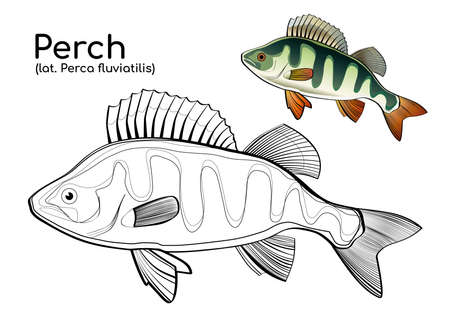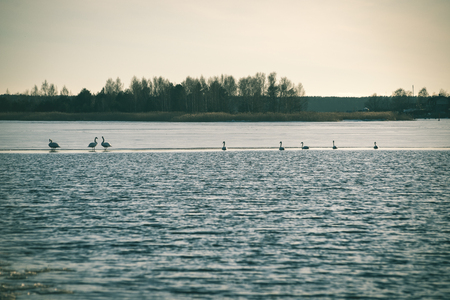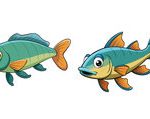1. Understanding Southern Crappie Habits
Crappie fishing in the South is all about understanding how these fish behave throughout the year. Whether youre targeting black crappie or white crappie, knowing their seasonal patterns, preferred water temperatures, and spawning habits can seriously improve your catch rate. Heres a breakdown of how these factors come into play in Southern lakes and reservoirs.
Seasonal Changes and Crappie Movement
Crappie behavior shifts dramatically with the seasons. In Southern states like Alabama, Georgia, Texas, and Mississippi, the weather tends to be milder than in northern regions, which means crappie may stay active longer during fall and winter. Heres what you can generally expect:
| Season | Crappie Behavior | Best Tactics |
|---|---|---|
| Spring | Spawning season; crappie move to shallow waters (2–6 feet) | Use jigs or minnows near brush piles and shoreline cover |
| Summer | Move to deeper, cooler water (10–20 feet); suspend near structure | Troll with crankbaits or vertical jigging near drop-offs |
| Fall | Feeding heavily; scattered throughout mid-depths | Cast small jigs or use spider rigging techniques |
| Winter | Slow metabolism; hold tight to deep structure | Suspend live minnows slowly near submerged timber or brush piles |
The Role of Water Temperature
Water temperature is one of the most important factors that affect crappie activity. In Southern lakes, water warms up earlier in the year compared to northern waters, which means the spring bite kicks off sooner. Here’s how crappie respond to different temperature ranges:
| Water Temperature (°F) | Crappie Activity |
|---|---|
| 50–55°F | Pre-spawn movement begins; fish stage near spawning areas |
| 56–65°F | Main spawning activity; fish are shallow and aggressive |
| 66–75°F | Post-spawn recovery; fish move back to deeper water gradually |
| 76°F+ | Summer pattern; fish hold deep and become more scattered |
Understanding the Spawning Cycle
The spawning cycle is a big deal when it comes to catching crappie in the South. Most crappie spawn between March and May, depending on the lakes location and elevation. During this time, males fan out nests in shallow coves and protect them fiercely, while females move in briefly to lay eggs before heading back to deeper water.
Tips for Targeting Spawning Crappie:
- Look for shallow flats with sandy or gravel bottoms near cover like stumps or brush.
- A lightweight jig under a slip bobber works great for precise presentations.
- If you see male crappie guarding nests, work your bait slowly through their territory—they’ll strike out of aggression.
By learning how seasonal shifts, temperature changes, and spawning habits influence crappie behavior in Southern lakes and reservoirs, you’ll be better prepared to adjust your tactics and make every trip count.
2. Best Times and Conditions for Southern Crappie Fishing
Knowing when to hit the water is half the battle when it comes to catching crappie in Southern lakes and reservoirs. These fish are highly influenced by seasonal changes, water temperature, and even the time of day. Here’s how to plan your trips for the best results.
Optimal Months for Crappie Fishing
In the South, crappie fishing can be productive year-round, but certain months really stand out. Spring is hands-down the best season, especially from late February through April, when crappie move into shallow waters to spawn. Fall also offers solid action as crappie feed heavily before winter sets in.
| Month | Crappie Activity Level | Key Notes |
|---|---|---|
| February – April | Excellent | Spawning season; fish move shallow |
| May – August | Fair to Good | Fish move deeper; early mornings are best |
| September – November | Good | Feeding up for winter; active in mid-depths |
| December – January | Slow to Fair | Bite slows down; target deeper structure |
Ideal Weather Conditions
Mild, stable weather tends to keep crappie more predictable. Sudden cold fronts or storms can shut down the bite. A few days of warming temperatures in late winter or early spring can turn on a hot bite, especially in shallower coves and creek arms.
| Weather Condition | Catching Potential | Tips |
|---|---|---|
| Mild & Stable Weather | High | Look for consistent temps and light winds |
| Before a Front Moves In | High | Fish often feed aggressively ahead of a front |
| Right After a Cold Front | Low to Moderate | Bite may slow; try deeper and slower presentations |
| Overcast Days | Good | Fish stay active longer during daylight hours |
| Breezy but Not Windy Days | Good | A light chop adds cover and encourages feeding activity near the surface or structure edges |
Best Times of Day to Fish for Crappie in the South
Early Morning (Sunrise – 9 AM)
This is often the most productive window, especially during warmer months. The water is cooler, and crappie are more active along brush piles, submerged timber, or drop-offs near shore.
Lunchtime Lull (10 AM – 2 PM)
The bite may slow down as the sun rises higher, particularly during summer. During this time, it’s best to go deeper or target shaded areas like bridge pilings or under docks.
Late Afternoon into Dusk (3 PM – Sunset)
The evening period can be just as good as the morning bite. As light levels drop, crappie often return to shallower zones to feed again. This is an excellent time for casting jigs or live minnows around cover.
| Time of Day | Catching Potential | Tactics That Work Best |
|---|---|---|
| Sunrise – 9 AM | Excellent | Casting jigs near brush, vertical jigging in shallow cover |
| 10 AM – 2 PM | Fair | Troll deeper water with minnows or small crankbaits |
| 3 PM – Sunset | Very Good | Casting near structure, slow retrieves with soft plastics |
If you match your fishing trips with these prime windows—early spring mornings with stable weather being the sweet spot—you’ll have a much better shot at landing a cooler full of slabs across Southern lakes and reservoirs.

3. Top Techniques for Lakes and Reservoirs
When it comes to crappie fishing in Southern lakes and reservoirs, local anglers rely on a few tried-and-true techniques that consistently bring in slabs. Whether youre fishing deep, shallow, or somewhere in between, these methods are tailored to the waters and seasons of the South.
Spider Rigging
Spider rigging is a favorite among Southern crappie anglers for its ability to cover water and present multiple baits at once. This method involves setting up several rods at the front of the boat, each spaced evenly like spider legs. It’s especially effective in open water when crappie are scattered or suspended at different depths.
Why It Works:
- Covers a wide area
- Presents multiple bait types and depths
- Ideal for pre-spawn and post-spawn periods
Best Setup for Spider Rigging:
| Rod Length | 10 to 16 |
|---|---|
| Bait Options | Live minnows, jigs with soft plastics |
| Depth Control | Use slip bobbers or weight systems |
| Boat Speed | 0.3–0.6 mph |
Vertical Jigging
If youre fishing around brush piles, submerged timber, or dock pilings, vertical jigging is your go-to move. This technique allows you to drop your lure right into the strike zone and keep it there. Its all about precision and feel.
Tips for Success:
- Use light tackle for better sensitivity
- Select jigs with bright colors for stained water
- Add scent attractants to increase bites
Ideal Conditions for Vertical Jigging:
| Water Type | Mildly stained to clear |
|---|---|
| Main Structure Targets | Docks, brush piles, standing timber |
| Lure Size | 1/32 oz to 1/8 oz jigs |
| Sensitivity Gear Tip | Use braided line with fluorocarbon leader |
Trolling for Crappie
Trolling is another popular method in Southern waters, especially during the summer months when crappie spread out across deeper basins. By slowly pulling multiple lures behind the boat, you can locate schools of fish without anchoring or drifting.
Trolling Basics:
- Select crankbaits or small spinners that mimic baitfish
- Add weight to get down to desired depth zones (10–20 feet common)
- Create a zig-zag pattern to trigger reaction strikes from hesitant fish
Trolling Setup Recommendations:
| Lure Type | Cranbaits, Road Runners, curly tail grubs on jig heads |
|---|---|
| Trolling Speed | 1.0–1.8 mph depending on lure type & depth needed |
| # of Rods (per angler) | 2–4 rods (check local regulations) |
| Main Season Use | Late spring through early fall |
No matter which technique you choose—spider rigging, vertical jigging, or trolling—each has its place in Southern crappie fishing. The key is understanding when and where each method shines based on season, structure, and water clarity.
4. Live Bait vs. Artificial Lures
When it comes to crappie fishing in Southern lakes and reservoirs, one of the most common questions anglers ask is whether to use live bait or artificial lures. Both have their advantages, and knowing when to use each can make a big difference in your catch rate.
Live Bait: Minnows
Minnows are a tried-and-true favorite among Southern crappie anglers. Especially during the spring spawning season and colder months, minnows tend to outperform lures because of their natural scent and movement.
- Best For: Cold water, spring spawning, heavily pressured lakes
- How to Use: Hook through the lips or back and suspend under a bobber or tightline them near structure
- Pros: Natural presentation, great for finicky fish
- Cons: Requires more care (keeping bait alive), can be messier
Artificial Lures: Jigs and Soft Plastics
Artificial lures like jigs and soft plastics are incredibly popular throughout the South thanks to their versatility and ease of use. They shine in warmer water and active feeding periods.
Jigs
- Best For: Warmer weather, targeting suspended crappie, covering large areas quickly
- How to Use: Cast and retrieve or vertical jig near brush piles and drop-offs
- Pros: Wide color selection, reusable, no need to keep alive
- Cons: May not work as well on inactive fish
Soft Plastics
- Best For: Clear water, sight fishing, finesse presentations
- How to Use: Thread onto a jighead; twitch or slowly retrieve near cover
- Pros: Realistic profiles, long-lasting, customizable action
- Cons: Less effective in muddy water or with spooky fish
Bait Comparison by Conditions
| Condition | Minnows (Live Bait) | Jigs (Artificial) | Soft Plastics (Artificial) |
|---|---|---|---|
| Cold Water (Winter/Early Spring) | Excellent | Fair | Poor to Fair |
| Warm Water (Late Spring/Summer) | Good | Excellent | Good to Excellent |
| Muddy/Low Visibility Water | Excellent (scent-based) | Good (bright colors) | Poor to Fair |
| Clear Water | Good | Good | Excellent (natural look) |
| Tournament Fishing / Covering Water Fast | Poor to Fair | Excellent | Good |
| Beginners / Easy Setup | Poor (requires care) | Good (simple rigging) | Good (variety of options) |
No matter what youre using, the key is matching your bait choice to the conditions and how active the crappie are. In Southern waters, having both live bait and a variety of lures in your tackle box gives you the flexibility to adapt on the fly.
5. Gear and Boat Setup Tips
When it comes to crappie fishing in Southern lakes and reservoirs, having the right gear and boat setup can make a big difference. Whether youre spider rigging on Grenada Lake or vertical jigging in Kentucky Lake, experienced anglers rely on specific equipment to stay successful throughout the seasons. Heres a breakdown of the must-have gear and setups used by seasoned crappie fishermen across the South.
Rods and Reels
Southern crappie anglers often use long rods for trolling and shorter ones for jigging or casting. Matching your rod to your technique is key.
| Technique | Rod Length | Reel Type |
|---|---|---|
| Spider Rigging | 10–16 | Spinning or baitcasting reel with smooth drag |
| Vertical Jigging | 8–10 | Light spinning reel |
| Casting Jigs or Minnows | 6–7 | Ultralight spinning reel |
| Shooting Docks | 56″–6 | Spinning reel with high line capacity |
Line Selection
Most Southern anglers prefer 4- to 8-pound test monofilament or fluorocarbon for clear water and braided line when fishing heavy cover like submerged timber or brush piles. Fluorocarbon is especially popular in deeper reservoirs due to its sensitivity and low visibility.
Electronics and Sonar Units
The use of advanced electronics has become a game-changer in modern crappie fishing. Here are some popular tools:
- Side Imaging Sonar: Helps locate schools of crappie near structure like stumps, ledges, or brush piles.
- Live Imaging (e.g., Garmin LiveScope, Lowrance ActiveTarget): Allows real-time tracking of fish movement so you can target individual crappie.
- GPS Mapping: Essential for marking productive spots and navigating large Southern reservoirs.
Boat Setup for Crappie Fishing
A well-rigged boat can help maximize your efficiency on the water. Most serious Southern crappie anglers customize their boats for techniques like spider rigging, long-line trolling, or single pole jigging.
| Component | Description |
|---|---|
| Trolling Motor with Spot-Lock | Keeps you positioned over structure without anchoring—great for windy days on open lakes. |
| Bow-Mounted Electronics | Allows control of sonar while fishing from the front deck. |
| Rod Holders (Spider Rig Setup) | Makes managing multiple rods easier when slow trolling with minnows or jigs. |
| Aerated Livewell or Bait Tank | Keeps live bait fresh during long days on the water. |
| Deck Space & Storage | A clean deck with organized tackle storage helps avoid clutter and keeps you efficient. |
Tackle Storage and Organization Tips
- Use labeled utility boxes for jigs, weights, hooks, and soft plastics.
- A small cooler bag with ice packs works great as a mobile bait keeper if your boat lacks a livewell.
- Add rod racks inside the boat for safe transport between fishing spots.
The Right Setup Brings Results
No matter how experienced you are, having the right gear and boat setup tailored to your style of fishing will give you an edge on Southern waters. Match your equipment to your local lake’s conditions and dominant seasonal patterns, and youll be hauling in slabs in no time.
6. Hotspots Across the Southern States
When it comes to crappie fishing in the South, knowing where to go can make all the difference. The region is home to some of the best crappie lakes in the country, especially in states like Alabama, Mississippi, and Texas. These hotspots are known for producing both numbers and size, making them favorites among local anglers and traveling fishermen alike.
Top Crappie Fishing Destinations
Here’s a breakdown of some of the most popular crappie fishing locations across these three Southern states:
| State | Lake/Reservoir | Why It’s Great |
|---|---|---|
| Alabama | Weiss Lake | Known as the “Crappie Capital of the World,” it offers excellent spring and fall fishing with plenty of shallow cover. |
| Mississippi | Grenada Lake | This lake consistently produces trophy-sized crappie and is famous for its pre-spawn bite in March and April. |
| Texas | Sam Rayburn Reservoir | A large, well-managed fishery with great year-round crappie action, especially around submerged timber and brush piles. |
What Makes These Spots Special?
Each of these lakes has unique features that make them ideal for crappie fishing:
- Weiss Lake (AL): The lake’s many coves and creek channels provide perfect spawning grounds. Local guides often suggest using live minnows or jigs near docks during spring.
- Grenada Lake (MS): This lake’s drawdown schedule helps concentrate fish, making them easier to target. Anglers here often use spider rigging techniques to cover more water.
- Sam Rayburn Reservoir (TX): With a mix of deep and shallow structure, this spot caters to both bank fishermen and boaters. Vertical jigging near standing timber is a popular method here.
Local Tips from Experienced Anglers
If you’re heading to one of these southern hotspots, keep these tips in mind:
- Check local fishing reports before your trip—conditions can change quickly.
- Use electronics to locate schools of crappie suspended around structure.
- Be patient in colder months—crappie tend to group tighter but are still catchable with slow presentations.
No matter which state you’re in, these lakes offer incredible opportunities for catching crappie. Whether youre a weekend warrior or planning a full-on fishing vacation, hitting one of these Southern gems could be your ticket to a cooler full of slabs.


